Existing User Log In
New User Registration
Register for a free account to gain full access to the VGChartz Network and join our thriving community.



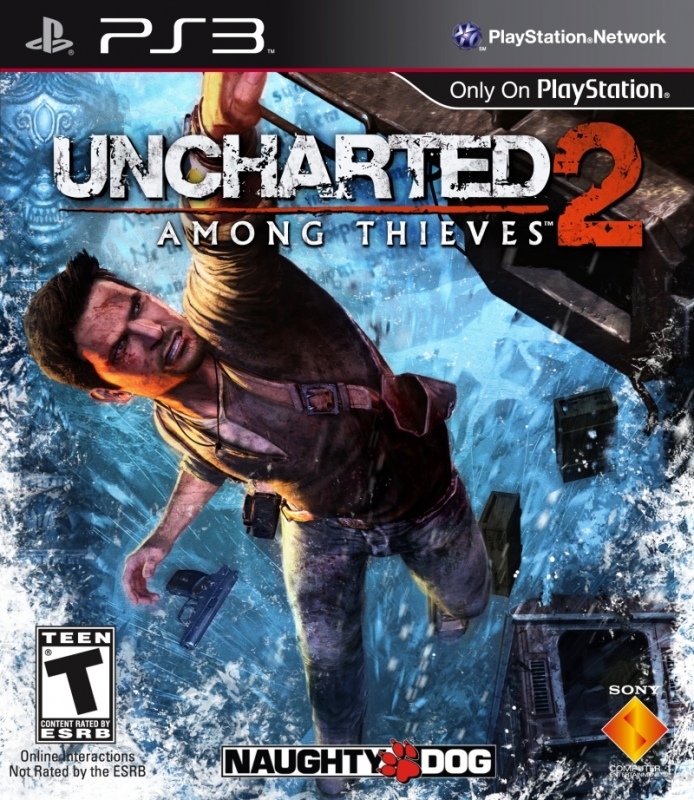

America - Front
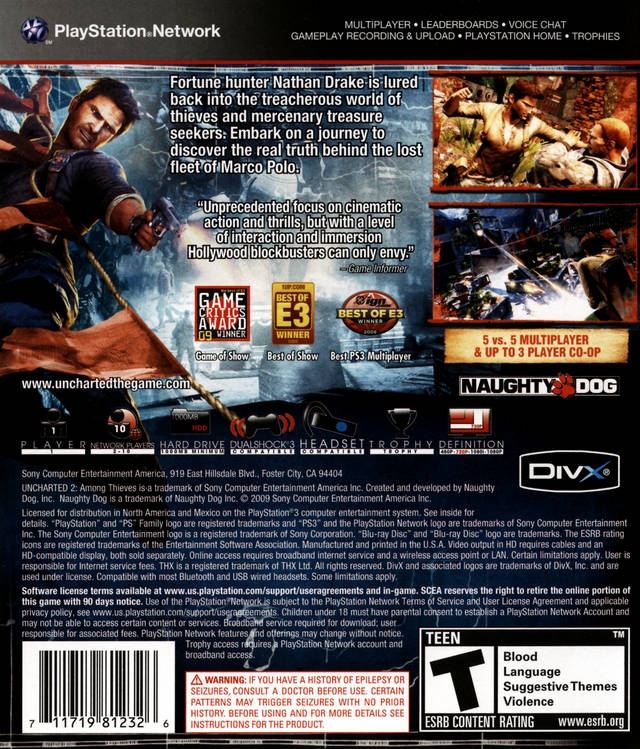

America - Back

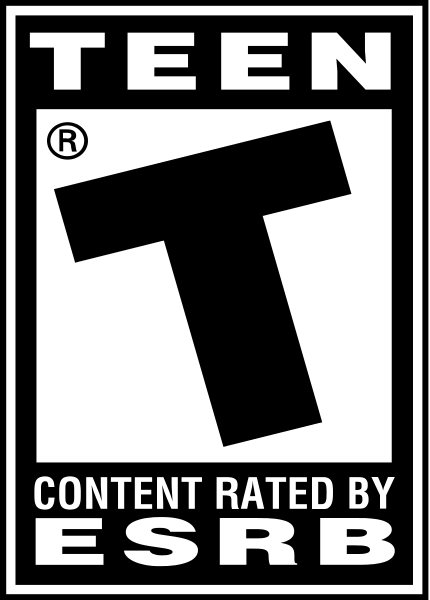
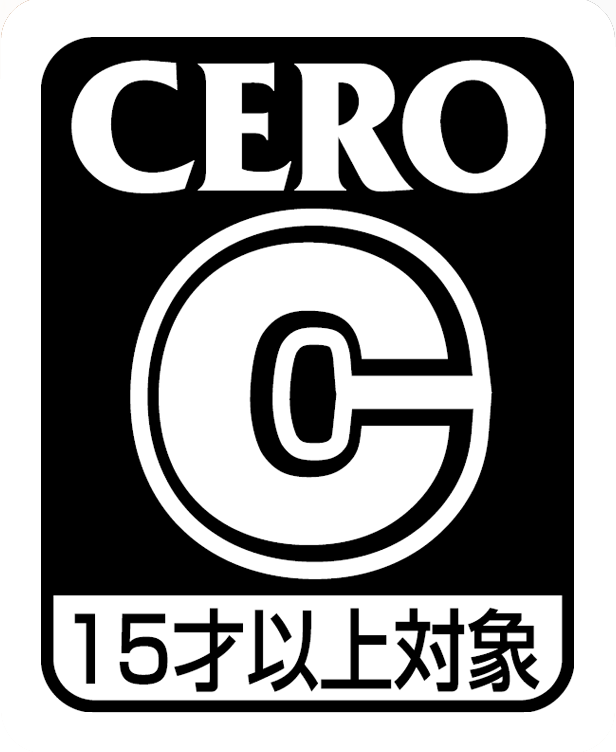
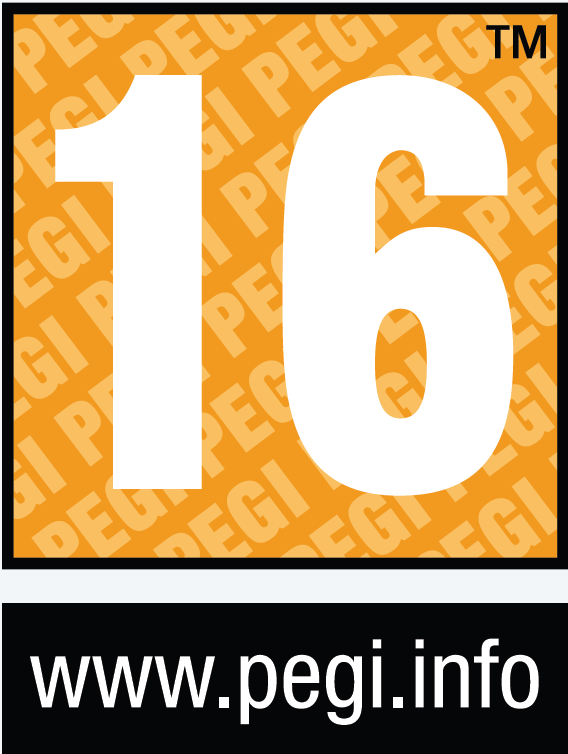
Uncharted: Ougontou to Kieta Sendan
アンチャーテッド 黄金刀と消えた船団
Naughty Dog
Action
 10/13/09 Sony Computer Entertainment
10/13/09 Sony Computer Entertainment  10/15/09 Sony Computer Entertainment
10/15/09 Sony Computer Entertainment  10/16/09 Sony Computer Entertainment
10/16/09 Sony Computer Entertainment
| Owners: | 2,386 | |
| Favorite: | 349 | |
| Tracked: | 66 | |
| Wishlist: | 25 | |
| Now Playing: | 100 | |
04th Mar 2018 | 2,036 views
*NOTE #1: While this doesn’t affect the overall outcome of any score, I will catalog a certain aspect of the Uncharted 2 GOTY Edition I’ve acquired: Siege Expansion Pack. There really hasn’t been anything else I recall that’s been added or tweaked to such a degree as when I first remember playing Uncharted 2 back in 2009—though, it would be tough for me to remember that anyways.*
*NOTE #2: I will sprinkle in minor story spoilers in order to talk about certain qualities I liked/disliked—mostly liked.*
To say one’s missing out on a very fun romp in Uncharted 2: Among Thieves would be a grave understatement. While certainly not bereft of admirable qualities, my stance on Uncharted: Drake’s Fortune seemed to—surprisingly—run sharply athwart panegyrics given to it upon most of the critic and consumer base. Yet in an age when the adventure genre’s most prolific icon, Indiana Jones, nuked the fridge on the silver screen after his latest romp, Naughty Dog stepped up here by providing what their round-two sequels have always accomplished: being bigger, bolder, and better than their predecessors.
The story centers around Nathan Drake on the hunt to discover what happened to Marco Polo’s lost fleet and his rumored discovery of Shambhala after being brought into the fold by Harry Flynn, a former acquaintance who may as well as had “Betrayal” emblazoned on his shirt and Chloe Frazer, another professional treasure hunter who splits time between being a sidekick, a..sort of damsel in distress, and a wild card. As suggested in the title, plans go south in a hurry and Drake sets out with Not Tomb Raider II’s dagger as the key to finding this secret city through some of Not Tomb Raider II’s locales.
Come to think of it, I’m surprised there wasn’t a bathroom cut scene here that gave a wink to the nude Drake exploit everyone was trying to uncover in Drake’s Fortune.
As it’s been no doubt apparent from the unsubtle insinuations above, Among Thieves is not an adventure title keen on breaking any story molds. But how this sequel is able to avoid feeling banal is in its structure. Rather than having a greater focus on one location, Drake’s second outing can feel more akin to someone spinning a globe and then pounding their finger against it to see where their next great adventure may lead.

That enthusiastic storytelling is so perfectly captured by one of the greatest in medias res openings crafted in games. Marrying easygoing platforming and shooting mechanics with well-shot cinematics, it’s one of the most exhilarating tutorials to date. From those first moments, the game moves at breakneck speed while celebrating the adventure serials it emulates. Jumping between a Turkish museum, tropics, snow-capped mountains, an Eastern city in war, and more, Among Thieves is intent on hurtling you through a series of adventures and spitting you back out ten hours later.
Another noted improvement would be how well the adventuring remains contextually sensible throughout the course of the story. The main antagonist, Lazarević, may be a bit more generic when it comes to…just about everything, but he and his mercenaries really do complement Drake’s cleverness. Even when his adversaries are days or months ahead on the hunt for this rumored city, using all sorts of contraptions and artillery to destroy everything in their path to find the next clue due to their incompetence, Drake’s focus on the details allows him to just survey the situation and use his wit and athleticism to overcome the odds.
Beyond the great spectacle and exciting adventure, the script is much cleverer than it lets on. While there is a sense of recycling, the expected wry humor and interesting characterizations get a bit more breathing room this time around. On top of just being able to maintain that rip-snorting personality, it’s surprising to catch the subtleties in the dialogue that’s able to acknowledge and subvert some its own tropes. Moments like challenging adventure staples or fourth-wall breaking instances regarding Drake’s actions up to and before the finale, there’s a lot more underneath the hood that’s nice to appreciate in comparison to the more jarring and uninteresting instances in its predecessor.
That same focus on the details is complemented by the character dynamics as well. The returning intrepid reporter Elena Fisher and Chloe obviously have affections for the hero, as expected, but that doesn’t mean it’s reduced to catfights over him. Instead they’re able to contrast each other through in-game interactions or the different stances on what action should be taken next. It also goes without saying that Among Thieves has one of the best treatments of a non-English speaking supporting character in games. Even though all of these interactions feel authentic, I must admit one hitch with characters I found were some questionable motivations.
If there’s one big hitch that bothers me a bit more than some iffy character motivations it’s the finishing chapters and the zany twists that come along with it. I understand that mystical tropes are often part and parcel for these sorts of adventure stories; but here, this kind of annoyance is actually exacerbated in regards to story and gameplay than the previous Uncharted. One part in particular made me think of Scooby Doo’s “And I would’ve gotten away with it too…” line during one twist. This isn’t to suggest everything built up before is somehow ruined, and as stated before those twists aren’t as jarring considering the subtler hints emplaced in the story, only that it’s the one aspect that’s toughest to swallow from the whole narrative.
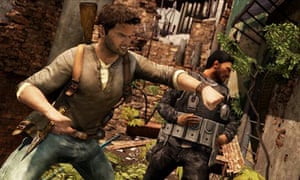
While Drake’s Fortune did have some praise-worthy components, like its cinematic panache and likeable characters, this sequel is simply more apt at embodying that sense of adventure throughout its story. For the characters: there are double-crosses, amazing heroics, and great treachery afoot. For threats: there’s a malicious Serbian mercenary crew armed with guns, tanks, trucks, and helicopters, as well as a mysterious ancient group that has its own side. For modes of transportation: there are jeeps, trains, boats, and more. Eventually, it all starts to feel less like a game and more like a catalog of adventure!
Chalking up these multitudinous locations is only part of the battle in making them feel so realized. Almost every vista is given a great level of artistic detail here, Nepal in particular. A war-ravaged South Asian city during the height of an all-out war looks rather fantastic: entire rooms shelled out, color brimming across the walls of every building, the plethora of temples in a distance. From beginning to end, there’s a different location on screen that makes this world feel incredibly expansive.
As expected with any sequel, the level of production values has also been improved. Drake has an even greater array of animations for each action he performs within the game; some of which are sparsely used. When near a fire, he’ll shield his face. Narrowly escaping death shows his animated debility when trying to walk during the aftermath. The same sort of environmental detail is what propels the action forward. Pipes bend and creak to Drake’s weight, aged mortar cracks, and bridges break in order to keep that incessant pace going smoothly. A few minor quibbles from Drake’s Fortune have also been ironed out. The technical performance across the game seems to keep a greater visual consistency and the grittier in-game character models blend better with the background. Cut scenes once again show punctilious editing work in order to capture nuance in each performance; though I do have to ask whose idea it was to make characters’ eyes looks so weepy in cinematics.
Audio design overall gets a slight improvement. Embodying a less-typical setting from the tropics in the previous title, composer Greg Edmonson (known popularly for his work on Firefly) is able to utilize different instruments specific for the cultures of that region that segue well during different moments. Along with the original ragtag crew stepping in, newcomers like Claudia Black as Frazer and Graham McTavish as Lazarević deliver excellent performances. Even when the plot developments are at their most typical the delivery is consistently nailed. Aside from a couple of minor audio bugs, the technical design is quite adequate once again. There’s a wider variety of weapons this time around and most, but not all, have that proper punch.
One of the biggest downfalls within Drake’s Fortune was the unrefined nature of its panoply of different mechanics and lacking a core that didn’t feel as though it had a different identity. Here, though, “variety is the spice of life” is the motto that’s more attributable this time around because the meticulousness of the design feels nuanced in a way that makes it feel like a focused collective.
As previous, the two central tenets are platforming and combat with a small percentage dedicated to puzzle solving. Certain sundries have been kyboshed this time such as the vehicular nonsense, out-of-nowhere quick-time events, and the only motion control option tied to grenade throwing, which is turned off by default (hooray!). Paring down on the filler moments in gameplay seemed like the best way to guarantee a greater focus on the other mechanics.
For all of Drake’s witticisms and everyman affability, the majority of his time will be spent shooting someone. Fortunately, the bouts of shooting action feel more responsive and kinestically pleasing. Enemy encounters can still sometimes follow that wave mentality and they’re still good at absorbing bullets, but the improved balance for weapons and believability of them covered mostly in body armor makes those complaints only noticeable when at their most frantic, or that one mini-boss on the train sequence which seemed like such a stupid way to end that segment. The same level of solid enemy AI tactics are here only varied more with enemies equipped with riot shields and those carrying handheld turrets. There are two problems that stuck out to me during shooting. One is the gunplay’s biggest weakness during close quarters combat, with the cover system acting unreliably at times. The other is a nuisance that’s just one factor spoiling the disappointing final act. A particular weapon found often during the end only acts as a single-shot when Drake equips it yet acts as burst-fire for a certain batch of enemies when they’re using it, even if it’s that same weapon the enemy was just using. And given how powerful one shot is already, it’s a terrible design decision to give such a distinct advantage to these different enemies that already soak up so many bullets.
Whenever tired of just shooting at hordes of enemies, Drake also has environmental hazards and hand-to-hand combat as other means of evening the odds. Throughout many of the better-designed combat arenas that incorporate verticality more often than the previous title, designers were very mindful to keep propane tanks scattered about to act as an auxiliary grenade option. Same concept as grenades too: just pick one up (which reduces speed) and toggle the L2 button to manipulate the throwing arc. Fisticuffs have mostly kept the same amount of non-complexity in favor of flair, but the subtleties in the design make it more enjoyable. Rather than stupid combo nonsense when pounding the square button is all the players would probably do anyways, it understands that while enabling an opportunity for enemies to throw a punch that can be countered. Overall, it’s simply a much more fluid complement this time around.

Given more spotlight this time, stealth gameplay comes into focus as a means to thin the ranks and find a good vantage point. While DF’s use of the mechanic was so pointless due to rudimentary AI that could spot anything, it’s more useful here…but with the rudimentary AI still present. The hand-holding nature becomes apparent during a dedicated stealth mission early on that shows just how easy it is to exploit the idiocy of security guards. Even when used towards the end, it’s annoying to feel fooled into thinking certain sections can be cleared out stealthily when there’s either an invisible wall or artificial enemy placement that forces you into combat.
Aside from a greater amount of animations and a lot of diversified background detail being taken in, platforming has remained mostly unchanged. A key problem with the platforming previously was the visuals being so detailed as to fool players between background text and actual scalable objects. Here, that’s not often the case due to a greater understanding of subtle changes in camera angles and a varied color palette indicating which way to go. It may still be straightforward, but having those kinds of subtleties made it so much easier to become rapt in the awesome sights Among Thieves places you in—which is something that struck me even more having noticed Enslaved and Remember Me’s more counterintuitive systems.
Puzzles are the one aspect I find slightly worse here. Aside from a visually splendid set of temple puzzles, the rest came off as artificial filler in comparison. Admittedly, it’s never been a great sense of accomplishment to complete when the answers are found within a journal; at least in DF they all felt natural.
Most annoyances in design present are still aggravatingly tied back to the first title, in one way or another. Whether it’s the stealth changing from pointless to now morphing into artificial and laughably rudimentary to the final chapters that contain another disappointing boss fight and bothersome enemies, it’s a shame to see those and other shooting quirks making a return here.
Even with a more improved experience with the core aspects of Uncharted’s gameplay, it’s fair to question what makes the improvement so apparent. Despite these multitudinous components not being the best and brightest in isolation, the magic comes into play with an added sense of dynamism to these different concepts. There’s always some form of variation to combative scenarios that makes it so exciting: mixing in platforming and shooting while hanging from a billboard, fighting enemies while leaping from one vehicle to another, and more. Even some of the most generic bosses in video game history (helicopters and tanks) are the most exciting encounters here because of how they're utilized. These aren’t excursions against vehicles with visible health bars and repeated move sets; they’re meant to act as a moving part WITHIN the level that encourages you to move forward.
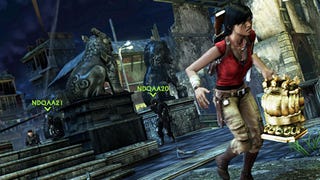
Value is another area in which Uncharted has improved. While the first one was able to present a fair number of secondary doodads for players to accomplish, the replay value of the campaign itself was low-to-moderate when it was all said and done. And though it’s annoying to see certain areas of criticism repeated in some fashion here, this meatier campaign really does have exhilarating moments I would’ve hated to have missed; on top of that, there’s a wealth of cooperative and competitive multiplayer content—which I treat as more of a great supplement instead of a necessary component.
For the sake of reiterating campaign replayability, there’s the standard assortment of trophies dedicated to kills and discovering treasures. These scattered treasures are that completionist filler but they’re also tied to an in-game reward system that enables you to unlock cheats, skins, bonus videos, and more. Plus, an appreciated improvement over the original Uncharted in this regard is the number of hidden collectibles found on said chapter is now detailed in the level select option.
For Naughty Dog’s first foray into the online multiplayer shooter gallery, they’ve certainly surprised with a suite of options and solid presentation.
The cooperative side fares moderately well with two key components (with a hybrid formula in a DLC pack): Objective and Survival. Co-op Objective repurposes a few single-player levels with a different background story for you and two other players. If there’s a sterling compliment to bestow it’s that the challenge is nail-biting, regardless of difficulty setting. Easy or Hard, these missions are structured to make a team spend about twenty to thirty minutes between them. It’s also a nice trinket for these repurposed co-op campaigns to have short cinematics between completed objectives. Unfortunately, there are two aspects that put a damper on one of my favorite MP aspects: lack of raw content and balancing for a different number of players. There are only three unique levels here. And though the maximum three players puts up an appropriate challenge, two players going through—which matchmaking seemed ready to put me through sometimes—get a half-baked sort of “scaling” that just reduces the difficulty to Easy. May not seem too bad, but the execution doesn’t legitimately compliment a two-player play-style which feels unfairly difficult to complete.
Co-op Survival is Uncharted’s reinterpretation of Gears of War’s Horde Mode, where up to three players face 10 waves of enemies that continually get stronger. Even with the verticality and good challenge in mind, it’ll definitely feel like the most recycled aspect of co-op. There’s also an objective variant where players have to carry treasure to a chest in order to move on to the next wave. Though not part of the ‘vanilla’ version, Siege Expansion Pack offers a different co-operative mode and two new multiplayer maps. Here, a trio of adventurers are tasked with defending a marked territory against waves of enemies. The twist being that each captured territory brings a stronger set of enemies right after beating that previous wave, making movement to the next location all the more challenging.
The competitive side of Among Thieves is possibly the most consistent in quality and quantity. The game mode staples such as team deathmatch and objective-based variants are here and tied to a rather solid network code. From someone who’s started from the beta to pockets of playing around launch to the most recent version (1.09.078), the fun of ledge-grabbing, running-‘n-gunning, and more didn’t deal with too many technical problems. The non-DLC map count totals at eight with most being refashioned Uncharted 2 single-player levels. Perhaps some may find that to be a borderline conservative number, but the “quality over quantity” excuse holds water here when you’re seeing all the ins and outs of most map designs. Admittedly, I did come away feeling the maps ‘The Train Wreck’ and ‘The Temple’ were throwaways, though.
What ties the competitive and cooperative modes so well together is the compelling ranking system. Sharing a conceptual design with the campaign extras, money is accumulated after each mission that can be spent between different characters skins between heroes or villains, permanent co-op weapon upgrades, taunts, and Uncharted’s version of perks known as “boosters.” Since the ranking system also configures your overall rank with available money in the bank, there’s an interesting persistent dynamic at play which makes leveling go that much smoother.
Say what you will about Among Thieves slouching a bit in its best cooperative option or a lack of something beyond the replicated campaign gameplay to completely call its own, this is a team known for pushing the technical aspirations of what’s come before. From dynamic events in levels to cinema mode, it’s a culmination of the last several years of good multiplayer design rolled into a technically proficient package.
In the end, Among Thieves is simply a sequel that sets out to be more respectable of the consumer’s money, more diligent in utilizing its varied game design, and more skillful in its storytelling. It’s unfortunate that, despite what’s been stated, it does bear a number of past sins that set its gameplay design back from the height of the production values. Nevertheless, this is still an immensely enjoyable rollercoaster ride that’s all the more memorable with game-rarities like flavorful writing and clinical pacing. It only means to entertain. And it does a better job this time around.
*coolbeans’s Certified FresH* Badge
| Total Sales |
0.21m
Japan |
3.28m
NA |
2.22m
Europe |
1.02m
Others |
6.74m
Total |
| 1 | 54,193 | 355,139 | 296,558 | 170,199 | 876,089 |
| 2 | 17,957 | 121,888 | 140,050 | 71,674 | 351,569 |
| 3 | 11,071 | 72,056 | 88,596 | 44,388 | 216,111 |
| 4 | 5,061 | 43,597 | 46,739 | 24,461 | 119,858 |
| 5 | 3,874 | 39,448 | 47,835 | 24,047 | 115,204 |
| 6 | 3,150 | 39,087 | 36,391 | 20,005 | 98,633 |
| 7 | 2,871 | 73,621 | 46,780 | 30,104 | 153,376 |
| 8 | 2,502 | 50,262 | 55,005 | 28,555 | 136,324 |
| 9 | 2,651 | 71,117 | 57,961 | 33,506 | 165,235 |
| 10 | 2,929 | 79,847 | 68,142 | 38,682 | 189,600 |
|
|
enditall727
posted 29/04/2013, 09:19
This is going to reach Crash Bandicoot status sales when it is all said and done. Message | Report |
|
|
|
|
|
hamo0odi90
posted 06/03/2013, 12:44
BEST GAME EVER , 6.11 M is unfair it should be at least 15 M Message | Report |
|
|
|
|
|
|
|
|
|